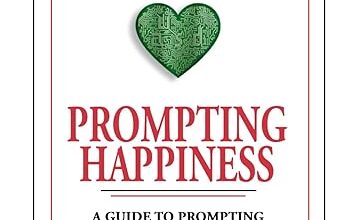The Next Chapter Begins: Exploring Post-Pandemic Trends in Book Publishing

In 2020, The COVID-19 pandemic has left no industry untouched, and the world of publishing is no exception. With lockdowns, social distancing measures, and a surge in remote work, reading habits and the publishing landscape have transformed significantly. In this extensive exploration of the evolving trends in book publishing post-COVID-19, we turn to the insights and experiences of T. M. Franklin, an author who has navigated this changing terrain with great success.
As the pandemic swept across the globe, people found themselves grappling with isolation and uncertainty. Home confinement became the norm, leading to a surge in reading as individuals sought solace and distraction through books. According to Franklin, readers increasingly gravitated toward genres that provided a form of literary escapism.

“The spirit of collaboration has become increasingly prevalent in the publishing world.” — Tami Franklin
Franklin explains, “During the height of the pandemic, readers were looking for an escape from the harsh realities of the world. They wanted stories that could transport them to different realms, offering respite from the daily grind. Genres like fantasy, science fiction, and even cozy mysteries gained significant traction.”
Amidst the challenges of the pandemic, there emerged a yearning for stories that carried a positive and uplifting tone. Franklin notes that books with themes of hope, resilience, and personal growth began to gain considerable popularity. These narratives provided readers with a sense of optimism and inspiration during trying times.
The pandemic prompted a resurgence of interest in fantasy and speculative fiction. Readers, yearning to break free from the monotony of lockdowns and restrictions, sought out books that allowed them to explore magical realms, embark on otherworldly adventures, and encounter fantastical creatures. Franklin suggests that this trend provided authors with a unique opportunity to unleash their creativity and capture the imaginations of readers.
While the pandemic disrupted traditional publishing schedules and strategies, it also accelerated a trend that had been gaining momentum for years: self-publishing. Franklin herself transitioned from traditional publishing to self-publishing back in 2015, long before the pandemic, and has witnessed numerous authors following suit. With increasingly accessible self-publishing platforms and a desire for creative control, authors are choosing independence as a viable path.
“The pandemic revealed the limitations of traditional publishing models,” Franklin reflects. “Authors were faced with uncertainties about release schedules and the changing landscape of the industry. This prompted many of us to embrace self-publishing, where we could take control of our work and reach our readers more directly.”
A significant shift in the publishing world has been the growing desire for direct connections between authors and readers. Franklin observes that readers now seek personal interactions with their favorite writers, moving beyond the pages of their books. This shift has led to the emergence of subscription-based models and author-exclusive communities, where readers can engage directly with authors.
Franklin explains, “Readers today are looking for a deeper connection with the authors they admire. They want to be part of a community, to have access to exclusive content, and to engage in meaningful conversations with writers. Subscription-based platforms and author-reader relationships have become central to this new dynamic.”
The overreliance on giant online retailers, such as Amazon, has prompted authors to diversify their distribution channels. Franklin highlights how authors are exploring alternative platforms and sales strategies to reach their audience, reducing their dependence on a single marketplace. This diversification not only provides authors with more control, but also mitigates the risks associated with relying solely on one platform’s algorithms.
Franklin says, “Authors are increasingly recognizing the importance of diversifying their distribution channels. Depending solely on one platform can be risky. Many authors are exploring alternative sales avenues, such as their websites or other e-commerce platforms, to maintain control over their work and reach a broader audience.”
In the post-COVID-19 era, a notable transformation in the publishing industry has been the shift from competition to collaboration among authors. Franklin’s advocacy for cross-promotion echoes the sentiment shared by many in the industry. Authors are now more willing to support one another, realizing that a rising tide lifts all boats. This collaborative spirit has created a sense of community and camaraderie among writers.
Franklin says, “Authors are acknowledging that we are not in competition but rather in a community. By supporting each other’s work and promoting one another, we expand our collective readership, benefiting everyone involved.”
The COVID-19 pandemic has left an indelible mark on the world of publishing, triggering shifts in reader preferences, distribution strategies, and author-reader interactions. Authors like Franklin have not only embraced these changes but have also found opportunities for creativity and connection amidst the prevailing uncertainty. “As we move forward, the publishing industry’s ability to adapt and innovate will be pivotal in ensuring its continued success,” says Franklin. Through their narratives, authors continue to offer readers a source of solace, inspiration, and a means of escape, underscoring the timeless significance of literature in our lives.



